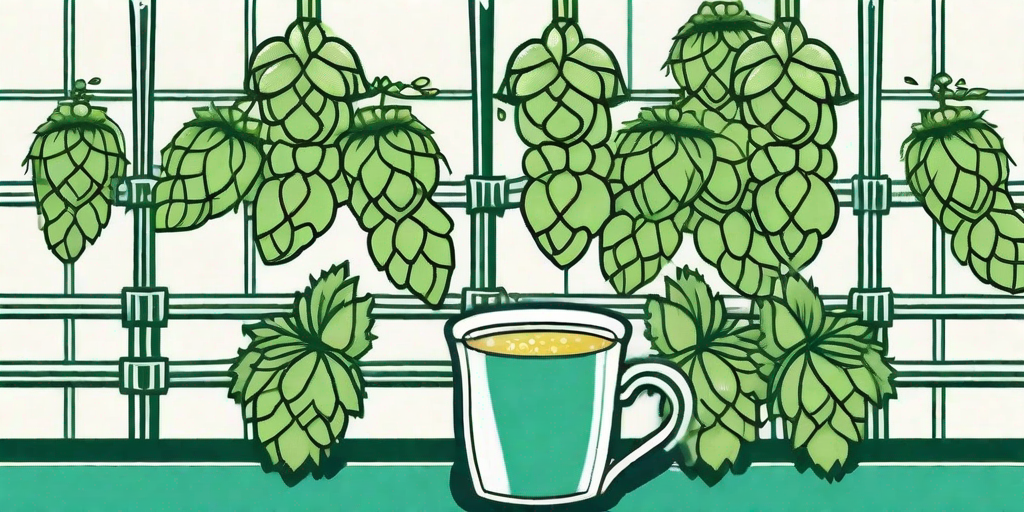
Greetings, green-thumbed beer enthusiasts! If you've ever dreamt of brewing your own beer, you're in the right place. This journey will take you from the comfort of your favorite bar stool to the great outdoors, specifically, your garden. Let's explore the fascinating world of hops cultivation and home brewing.
Understanding the Basics of Hops
Before we dive into the nitty-gritty, let's get to know our star player a little better. Hops, or Humulus lupulus if you're feeling fancy, are perennial plants that are integral to beer production. They're responsible for that distinctive bitter taste and aroma that beer lovers worldwide can't get enough of.
But hops aren't just about flavor. They also act as a natural preservative, extending the shelf-life of your brew. So, if you've ever wondered why your beer doesn't spoil even after months, you have hops to thank for that.
The Life Cycle of a Hops Plant
Hops plants are hardy climbers that can grow up to 25 feet in a single season. They start their life as a rhizome, which is a piece of root cut from a mature plant. The rhizome is planted in early spring and sprouts into a vine that produces cones by late summer. These cones are the gold we're after.
After the first frost, the vine dies back to the ground, but fear not! The rhizome remains alive underground, ready to sprout anew when spring comes around. It's the circle of life, hops style.
How to Grow Your Own Hops
Now that we've acquainted ourselves with the basics, let's roll up our sleeves and get to work. Growing hops is a rewarding endeavor that requires a bit of patience, a dash of diligence, and a whole lot of love.
Here's a step-by-step guide to growing your very own hops vine:
- Choose the Right Variety: There are many varieties of hops, each with its unique flavor profile. Some popular ones include Cascade, Centennial, and Chinook. Choose one that suits your beer preference.
- Find the Perfect Spot: Hops love the sun and need well-drained soil. Find a sunny spot in your garden where the soil doesn't stay soggy.
- Plant the Rhizomes: Plant the rhizomes horizontally, about 1 inch deep, with the buds pointing upwards. Space them about 3 feet apart to give them room to grow.
- Water Regularly: Water your hops regularly but avoid overwatering. The soil should be moist, not waterlogged.
- Train the Vines: As the vines start to grow, train them to climb a trellis or some other vertical structure. This will help them grow tall and strong.
- Harvest the Cones: By late summer, your vines should be laden with ripe cones. Harvest them by hand, leaving the vine intact for next year's growth.
Brewing Your Own Beer
With a successful harvest under your belt, it's time to put those hops to good use. Brewing beer is both an art and a science, and while it might seem daunting at first, it's actually quite straightforward.
Here's a simple guide to brewing your first batch of beer:
- Boil the Ingredients: Combine water, malt extract, and hops in a large pot. Bring to a boil and let it simmer for about an hour. This mixture is known as the wort.
- Cool the Wort: After boiling, cool the wort as quickly as possible to prevent bacterial growth.
- Add the Yeast: Once the wort is cool, add the yeast. This process is known as pitching.
- Ferment: Transfer the wort to a fermentation vessel and let it ferment for about two weeks.
- Bottle: After fermentation, bottle your beer and let it carbonate for another two weeks.
- Enjoy: Crack open a bottle, pour yourself a glass, and enjoy the fruits of your labor.
Frequently Asked Questions
Can I grow hops in a pot?
Absolutely! Hops can be grown in large pots or containers. Just make sure they have plenty of room to grow and climb.
How long does it take to grow hops?
From planting to harvest, it takes about four to six months for hops to mature. Patience is key!
Can I brew beer without hops?
Technically, yes. But it won't taste like the beer we know and love. Hops are essential for that distinctive beer flavor.
Conclusion
And there you have it, folks! A comprehensive guide to growing your own hops and brewing your own beer. It's a journey that requires time, effort, and a bit of green thumb, but the rewards are well worth it. So, why not give it a shot? Who knows, you might just brew the next award-winning beer right in your backyard!











